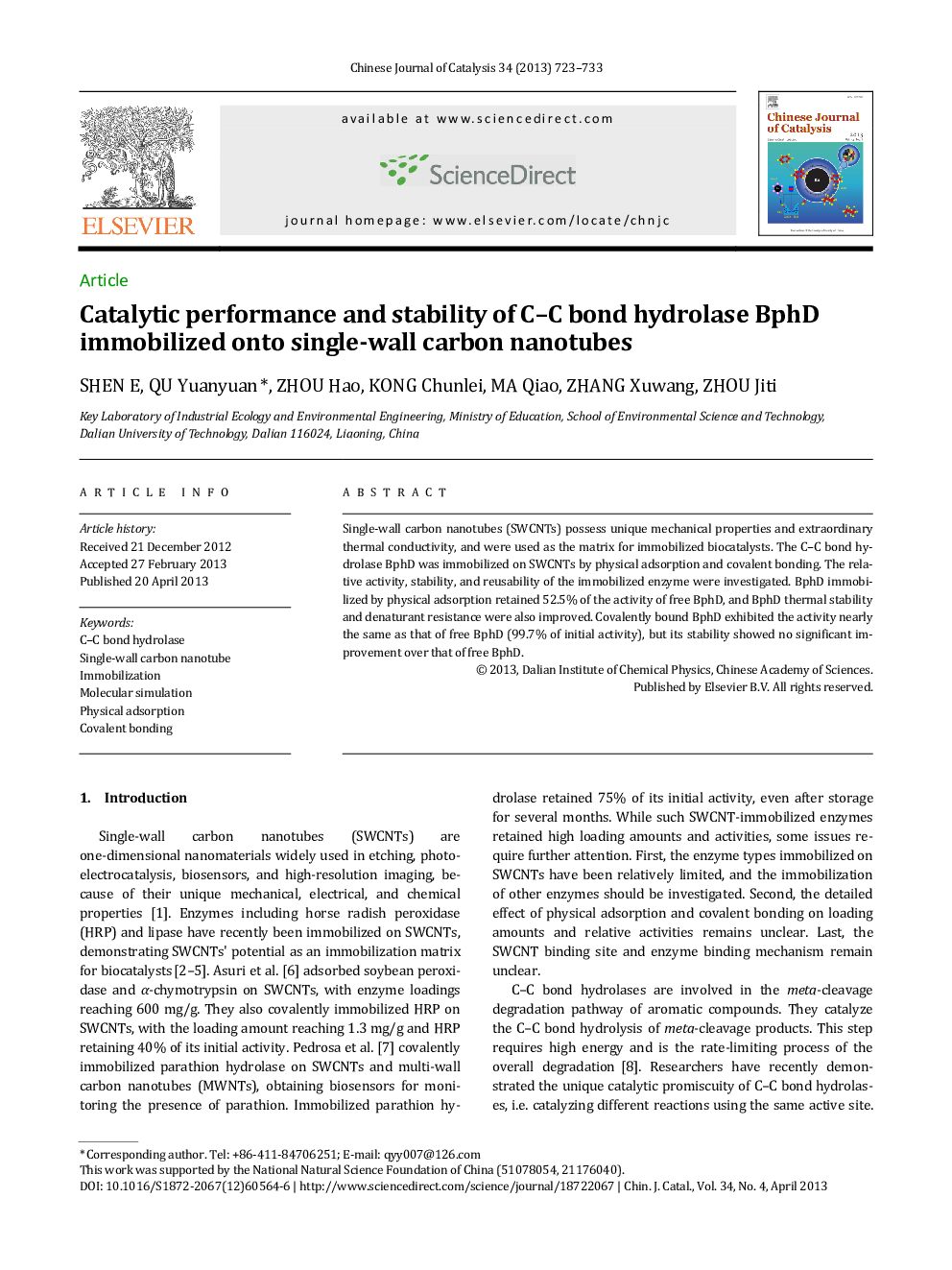| Article ID | Journal | Published Year | Pages | File Type |
|---|---|---|---|---|
| 60095 | Chinese Journal of Catalysis | 2013 | 11 Pages |
Single-wall carbon nanotubes (SWCNTs) possess unique mechanical properties and extraordinary thermal conductivity, and were used as the matrix for immobilized biocatalysts. The C-C bond hydrolase BphD was immobilized on SWCNTs by physical adsorption and covalent bonding. The relative activity, stability, and reusability of the immobilized enzyme were investigated. BphD immobilized by physical adsorption retained 52.5% of the activity of free BphD, and BphD thermal stability and denaturant resistance were also improved. Covalently bound BphD exhibited the activity nearly the same as that of free BphD (99.7% of initial activity), but its stability showed no significant improvement over that of free BphD.
摘要采用修饰与未修饰单壁碳纳米管固定C–C键水解酶BphD, 14;并对固定化酶的相对活性、稳定性、重复使用性进行了考察. 结果表明, 14;未修饰单壁碳纳米管固定的BphD相对活性为游离态的52.5%, 14;其热稳定性和在变性剂中的稳定性均有所提高, 14;且重复使用10次仍可保持初始活力的90%. 修饰单壁碳纳米管固定的BphD相对活性可达99.7%, 14;但其稳定性没有明显提高. 同源模建及分子对接分析结果显示, 14;未修饰的单壁碳纳米管对BphD亚基之间的联系可能存在干扰作用, 14;从而对其活性产生影响. 14;
Graphical abstractThe C-C bond hydrolase BphD was immobilized on single-wall carbon nanotubes by physical adsorption and covalent bonding. The former imparted higher stability while the latter imparted higher activity on the immobilized enzyme.Figure optionsDownload full-size imageDownload as PowerPoint slide
